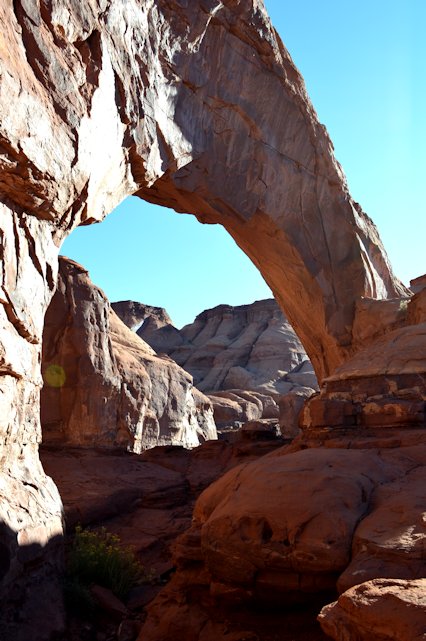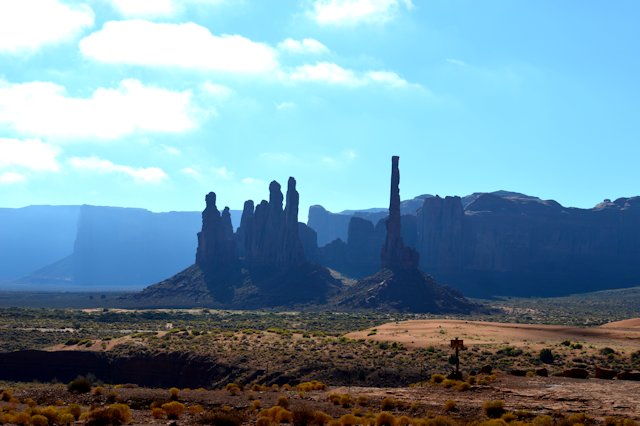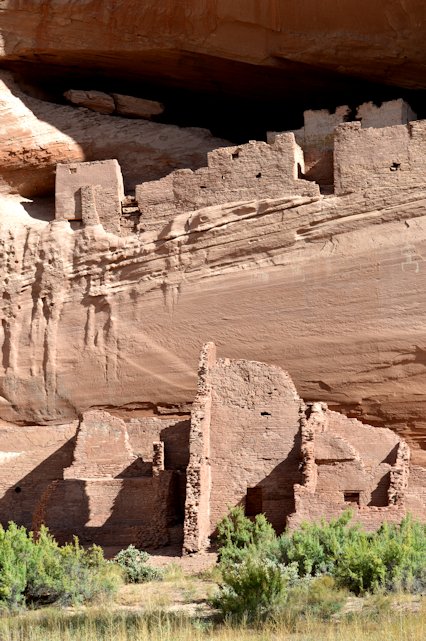While in the area we drove down to Canyon de Chelly, a large canyon with high sheer cliff walls that has been occupied by Navajo and Anasazi (Navajo for The Ancient Ones) for over 1,000 years. Vehicles can only enter the canyon on one end where the cliffs are low – at the other end of the canyons the cliff walls are hundreds of feet high. There are many trails in various parts of the canyon for hiking and horses and sheep though. The canyon is only accessible to tourists in 4-wheel drive vehicles with a Navajo guide. We took a tour of the canyon in an open Jeep with our guide named Bennie. Bennie has family that still lives in the canyon parts of the year. He told us many stories about living in the canyon and how his ancestors lived. There are people who live in the canyon either part of the year or year round.
The canyon floor is a riverbed and is very deep sand. In the spring the snow melt and rains make the river flow, but this time of year (October) the river is dry and the only water for the residents is either to truck it in or as Bennie told us, put pinholes in the side of a 50-gallon drum and bury it – water will seep in through the sand and it can then be pumped up through the barrel. It is naturally filtered.
The Anasazi built several cliff dwellings along the canyons and in more recent times they lived in traditional hogans, round buildings shaped by logs and covered in mud, with a door and a smokehole at the top. Now some residents live in campers and trailers.
There are a lot of horses that live in the canyon, and part of the year cattle and sheep live in the canyon as well.
It was a beautiful area with the high sheer cliffs, trees and grasses on the valley floor.
Here are pictures we took on our tour:
interesting-rock-formation
handprints-and-butterfly-pictographs
evidence-of-volcanic-activity-in-the-monument-valley-area
cliff-dwellings-with-sheer-cliffs-above
cliff-dwellings-with-rockfall-that-happened
canyon-de-chelly-is-still-occupied-this-person-brings-water-in-blue-barrels
another-view-of-white-house-ground-units-used-to-be-3-stories-and-gave-access-to-cliff-dwellings
another-area-of-cliff-dwellings
ancient-ruins-with-a-man-to-show-scale
white-house-anasazi-ruins-in-a-high-cliff
valley-floor-in-canyon-de-chelly
petroglyphs-showing-horsemen-chasing-an-antelope-and-other-things
petroglyphs-in-a-high-cave-they-may-have-used-ladders-to-get-there
navajo-call-this-the-man-and-woman-rocks



